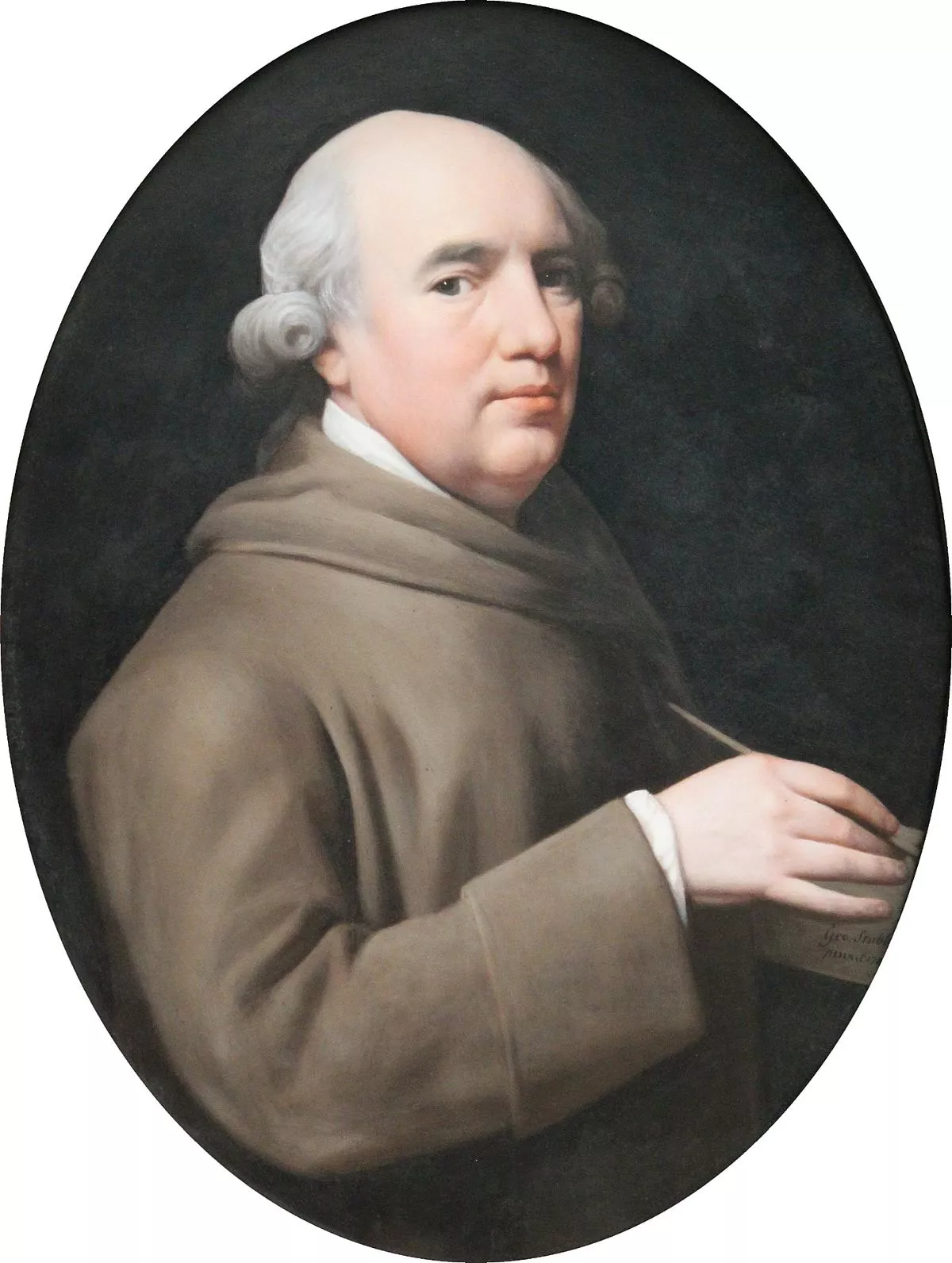 1.
1. George Stubbs was an English painter, best known for his paintings of horses.

 1.
1. George Stubbs was an English painter, best known for his paintings of horses.
Self-trained, Stubbs learnt his skills independently from other great artists of the 18th century such as Reynolds and Gainsborough.
George Stubbs' output includes history paintings, but his greatest skill was in painting animals, perhaps influenced by his love and study of anatomy.
George Stubbs's painting Whistlejacket hangs in the National Gallery, London.
George Stubbs was born in Liverpool, the son of a currier, or leather-dresser, John George Stubbs, and his wife Mary.
George Stubbs worked at his father's trade until the age of 15 or 16, at which point he told his father that he wished to become a painter.
George Stubbs subsequently approached the Lancashire painter and engraver Hamlet Winstanley, and was briefly engaged by him in a sort of apprenticeship relationship, probably not more than several weeks in duration.
George Stubbs had had a passion for anatomy from his childhood, and in or around 1744, he moved to York, in the North of England, to pursue his ambition to study the subject under experts.
George Stubbs moved to London in about 1759 and in 1766 published The anatomy of the Horse.
George Stubbs often painted horses with their grooms, whom he always painted as individuals.
George Stubbs painted more exotic animals including lions, tigers, giraffes, monkeys, and rhinoceroses, which he was able to observe in private menageries.
George Stubbs's painting of a kangaroo was the first glimpse of this animal for many 18th-century Britons.
George Stubbs became preoccupied with the theme of a wild horse threatened by a lion and produced several variations on this theme.
George Stubbs painted historical pictures, but these are much less well regarded.
George Stubbs hoped to achieve commercial success with his paintings in enamel, but the venture left him in debt.
George Stubbs's last project, begun in 1795, was A comparative anatomical exposition of the structure of the human body with that of a tiger and a common fowl, fifteen engravings from which appeared between 1804 and 1806.
George Stubbs died at the age of 81 on 10 July 1806 at the home he had lived in since 1763, No 24 Somerset Street, near Portman Square, Marylebone, central London.
Stubbs's son George Townly Stubbs was an engraver and printmaker.
George Stubbs began an informal series of works on the subject of a lion attacking a horse around 1762 or 1763, and he continued to explore and reinterpret the theme in at least 17 images over a period of about 30 years.
George Stubbs was able to study a lion in life that was in the menagerie of Lord Shellburne at Hounslow Heath.
Interestingly, George Stubbs first painted "Episode C", and it was not until later that he was inspired to go back and paint the moments leading up to the climatic event.
George Stubbs remained a secondary figure in British art until the mid-twentieth century.
Anthony Jennings' 2024 novel Mister George Stubbs explores the painter's early years, focusing on his time in York during Bonnie Prince Charlie's rebellion of 1745, and his mysterious trip to Rome, where Bonnie Prince Charlie's father, the exiled Jacobite King James III, had his court.